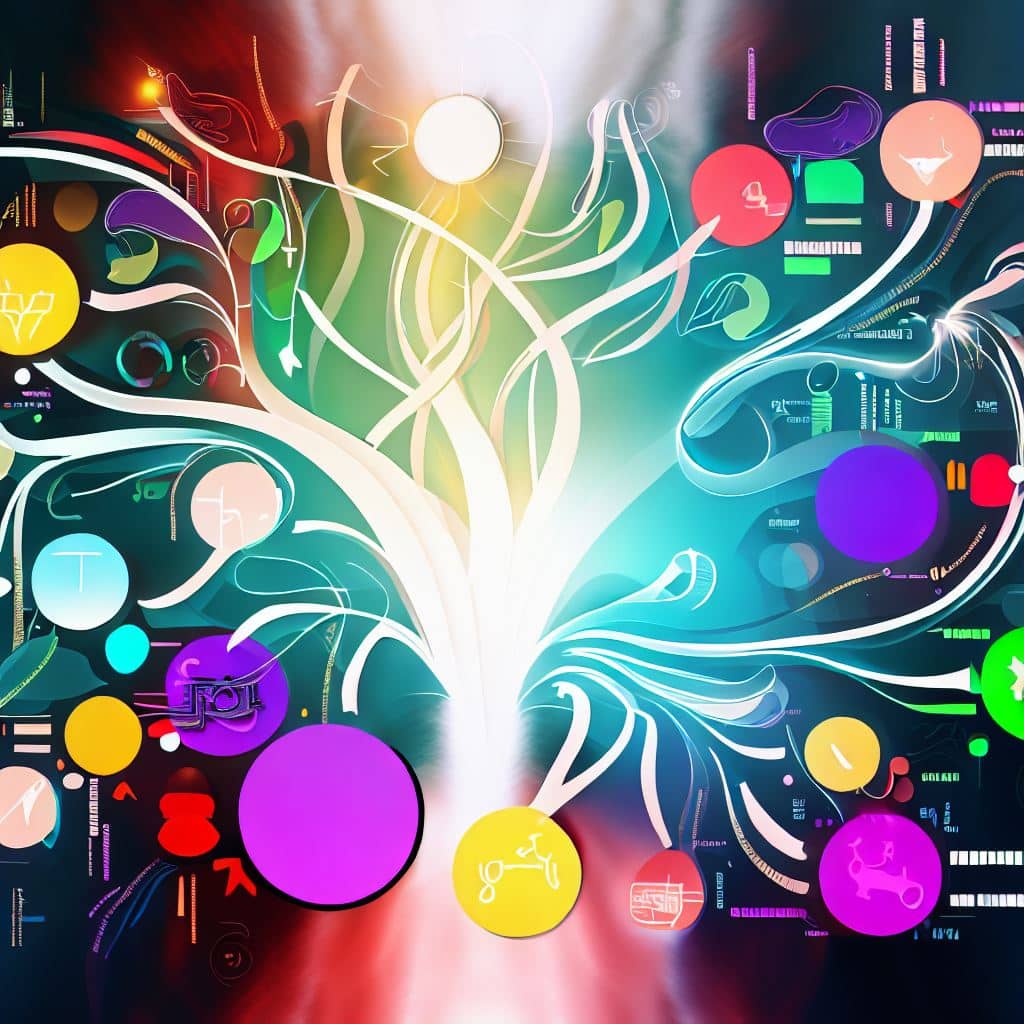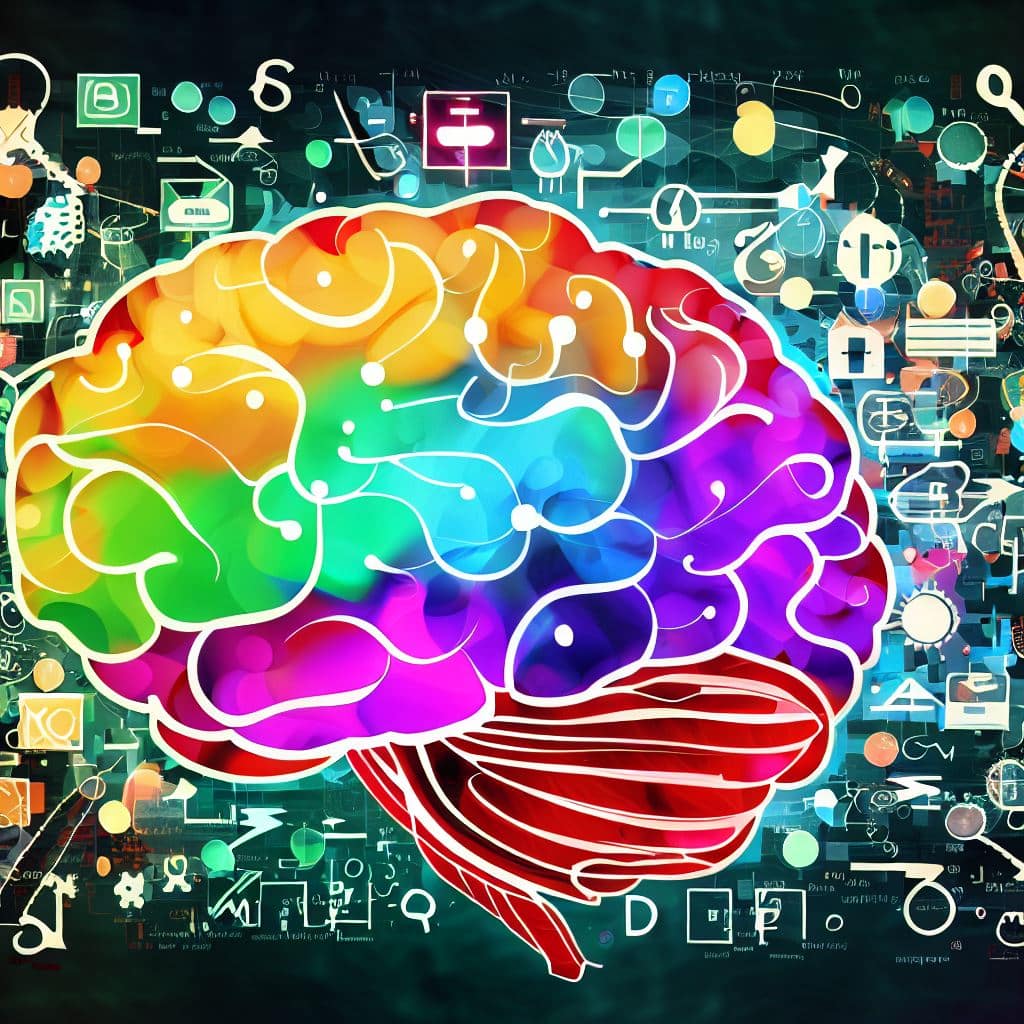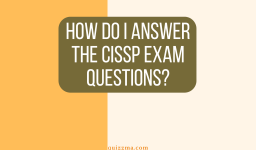In the era of information overload, students around the globe grapple with a multitude of challenges when diving into their study sessions. From the easily accessible distractions of smartphones and social media to the sheer volume of material to retain, the modern study landscape is more complex than ever.
Moreover, with a diversity of subjects and ever-evolving curriculum demands, students often find themselves feeling overwhelmed, unable to retain information, and stressed about upcoming exams.
Yet, amid these challenges, the beacon of hope lies in the adoption of effective study techniques. These aren’t mere time-fillers or trendy methods; they are rooted in cognitive science and years of educational research.
The right techniques can transform study sessions from aimless reading into purposeful learning, ensuring that students not only remember the information but also understand and apply it. By harnessing the power of these strategies, learners can navigate the labyrinth of academic challenges with confidence and efficiency, making the most out of every minute they invest.
As we delve deeper into this article, we’ll explore these game-changing techniques, offering students the tools they need to elevate their learning journey.
Main Ideas & Key Takeaways:
- Challenges in Modern Learning:
- Information overload and distractions like smartphones make studying tougher.
- The evolving curriculum can be overwhelming.
- Effective Study Techniques:
- These methods are based on educational research and cognitive science.
- Active Recall:
- A method where students actively stimulate memory.
- It strengthens neural pathways.
- Implementation tips include flashcards, teaching someone, self-quizzing, and mind maps.
- Spaced Repetition:
- Reviewing information at increasing intervals.
- Based on the “Forgetting Curve” by Hermann Ebbinghaus, it maximizes memory retention.
- Modern tools like Anki and Quizlet use this technique efficiently.
- Chunking Information:
- Breaking information into smaller, digestible “chunks.”
- This method leverages the capacity of our working memory.
- Techniques include grouping by themes, visual aids, mnemonics, and breaking down processes.
- Mind Mapping:
- Visual representation of ideas.
- Aids in analysis, synthesis, and comprehension.
- Creation tips include starting central, branching out, and using colors and imagery.
- Benefits include enhanced memory, creativity, holistic views, and adaptability.
- Practice Testing:
- Teaching or simulating test conditions to reinforce memory and understanding.
- Benefits include improved recall, feedback, reduced test anxiety, and better learning strategies.
- Tools include flashcards, old exams, study groups, and online quiz platforms.
- Mnemonic Devices:
- Techniques to aid in retention through associations, patterns, or imagery.
- Examples include acronyms, rhymes, method of loci, visual imagery, chunking, and story method.
- They make abstract information concrete and memorable.
- The Pomodoro Technique:
- A time management method to optimize study sessions.
Active Recall
Active Recall is a study method that involves actively stimulating memory during the learning process. Rather than passively reading information or watching a lecture, students actively challenge their brains to retrieve and produce answers. It’s the difference between reading a flashcard’s question and answer right away versus reading the question, pausing to think of the answer, and then checking if you were correct.

Active Recall harnesses the brain’s ability to reinforce neural pathways when it recognizes that certain information is important. Every time you actively retrieve information from memory, the neural pathway for that information strengthens, making it easier to access in the future.
According to a study highlighted in “Using Active Recall in Learning,” students who employed active recall demonstrated significantly better retention rates than their peers who relied on passive study methods.
This difference in retention rates can be attributed to the brain’s improved capacity to retrieve information when it’s been actively engaged in the learning process.
Practical Tips for Implementation:
- Flashcards: One of the most popular tools for active recall. Write the question on one side and the answer on the other. Read the question, attempt to answer it without looking, and then flip the card to check your response.
- Teach Someone: After learning a topic, teach it to a friend, family member, or even an imaginary class. The act of teaching forces your brain to recall information actively.
- Self-Quizzing: After finishing a chapter or section, write down questions based on the material. Come back to these questions later and try answering them without referring to your notes.
- Mind Maps: After reading a section, create a mind map from memory. This visual tool forces you to recall main ideas and their connections.
Spaced Repetition
Spaced Repetition is a learning technique that involves reviewing information at increasing intervals over time. The idea is to study information just at the point you’re about to forget it, thereby reinforcing your memory.
By spacing out review sessions, learners take advantage of the way our brains are wired, making retention more effective and long-lasting.
The “Forgetting Curve” by Hermann Ebbinghaus
The concept of Spaced Repetition is grounded in the pioneering work of Hermann Ebbinghaus, who introduced the “forgetting curve.” This curve illustrates the decline of memory retention over time. Ebbinghaus discovered that memory retention drops sharply immediately after learning, but the rate of decline slows down with each subsequent review of the material.
In essence, the more often we review what we’ve learned, the longer we remember it. Spaced repetition leverages this understanding by spacing reviews strategically, so we’re always reviewing right before our memory of the information would naturally decline.
Modern technology has made implementing spaced repetition more efficient and personalized than ever. Tools like Anki and Quizlet utilize algorithms to determine the optimal time for a learner to review specific pieces of information. When a learner reviews a card in Anki and indicates how well they remembered the material, the software calculates when they should see that card again.
If they found it easy, the interval before the next review will be longer; if they found it hard, they’ll see it sooner. Over time, as the learner consistently recalls the information, the intervals grow, ensuring that the material remains in long-term memory.
Chunking Information
Chunking refers to the strategy of breaking down large volumes of information into bite-sized pieces or “chunks” that are easier for the human brain to digest. Imagine trying to remember a 10-digit number like 1234567890.
Instead of trying to remember it as a long sequence, chunking would involve breaking it down into smaller parts, such as 123-456-7890. By doing so, we’re not trying to recall ten individual digits, but rather three separate groups.

The human working memory, responsible for short-term data processing, has limitations. According to George A. Miller’s classic study “The Magical Number Seven, Plus or Minus Two,” our working memory can handle approximately seven items at once.
By chunking information, we effectively reduce the number of items we have to remember, making it more manageable for our working memory.
Moreover, chunking can help in establishing meaningful connections between information bits, further aiding recall. When we group related items, it’s often easier to remember them as a cohesive unit rather than disparate pieces.
How to Effectively Chunk Study Materials
- Group by Themes or Concepts: When studying a chapter, identify the main ideas and group-related details under them.
- Use Visual Aids: Diagrams, flowcharts, and infographics can be excellent tools to visualize chunks of information, especially for complex topics.
- Create Acronyms or Mnemonics: For lists, consider creating a word where each letter represents an item on the list or a sentence where the first letter of each word does the same.
- Break Down Processes: If you’re learning a multi-step procedure, break it down into phases or stages. Each stage can represent a chunk of steps related to a specific part of the process.
- Utilize Lists and Bullet Points: When taking notes, use lists or bullet points to break down information. This visual separation can help in distinguishing and recalling chunks.
Mind Mapping
In the realm of learning strategies, visual aids have always held a paramount position, with mind mapping being a stellar representative. Mind mapping, at its core, is a graphic representation of ideas and concepts. It’s a visual thinking tool that assists in structuring information, aiding in better analysis, synthesis, comprehension, and generation of new ideas.

Originating from the brain’s natural inclination towards visual stimuli, mind maps mirror the way our brains associate and connect ideas, making them an organic extension of our cognitive processes.
How to Create Mind Maps
- Start Central: Begin by placing the main idea or concept in the center of your page. This ensures it’s the focal point and allows for branching out in various directions.
- Use Branches for Main Ideas: From the central idea, draw branches outwards. Each branch represents a primary thought or theme related to the central concept.
- Sub-branches for Details: From the main branches, draw smaller branches (or sub-branches) to represent more specific details or subtopics related to each primary thought.
- Color and Imagery: Utilize different colors for distinct branches, aiding in differentiation and recall. Incorporate images, symbols, or doodles to make the map more engaging and memorable.
- Keywords Over Sentences: Mind maps are about brevity and connection. Use singular words or short phrases instead of full sentences to keep it concise.
- Iterate and Expand: As you learn more or as your understanding deepens, continue to add to and adjust your mind map.
Benefits in Relation to Memory Retention and Creativity:
- Enhanced Memory: The combination of visual stimuli (shapes, colors, images) with structured information makes mind maps a powerful tool for recall. According to the source, “Mind Mapping as a Meta-Learning Strategy,” students who employed mind maps showed better retention of information compared to traditional linear note-taking.
- Boosted Creativity: Mind mapping encourages a free flow of ideas. Its non-linear structure means you can jump between categories, making connections you might not have seen in a more rigid format.
- Holistic View: Mind maps provide a bird’s eye view of a topic. This comprehensive perspective aids in understanding the interrelation between different concepts.
- Flexible and Adaptable: Mind maps can be easily expanded, adjusted, or condensed, making them versatile tools for both brainstorming sessions and revision.
Practice Testing
One of the most profound ways to solidify understanding of a topic is to teach it to someone else. The adage “to teach is to learn twice” captures the essence of this strategy. When we prepare to teach, we organize information coherently, address potential gaps in our understanding, and reinforce our memory of the subject.

The process of teaching demands an active retrieval of knowledge and its application in a coherent manner, mirroring the benefits of practice testing.
Benefits of Self-Testing Before an Actual Exam:
- Improved Recall: According to the study “The Critical Importance of Retrieval for Learning,” students who engaged in practice testing had significantly higher retention rates compared to those who merely reviewed their notes.
- Feedback Loop Creation: Self-testing gives immediate feedback. It helps students identify areas they’re strong in and areas that require further revision.
- Mitigates Test Anxiety: Familiarity with the testing environment and practice under exam-like conditions can reduce anxiety when the actual test day arrives.
- Enhances Metacognition: Practice testing makes learners more aware of their learning processes, helping them develop better strategies for future studies.
Tools and Techniques for Effective Practice Testing:
- Flashcards: Especially useful for subjects requiring memorization. The process of creating the flashcards is itself a form of studying, and then using them aids in retrieval practice.
- Old Exams: Using past exams or quizzes to test oneself provides a realistic practice experience and exposes students to the format and style of questions they’ll face.
- Study Groups: Forming study groups and quizzing each other can be an effective way to engage in practice testing. It also brings in varied perspectives and potential questions one might not have thought of on their own.
- Online Quiz Platforms: Websites and apps that offer quizzes on various subjects can provide diverse question types and immediate feedback. Some platforms also adapt the difficulty based on your performance.
- Summative Reviews: After studying a topic, write or orally summarize everything you remember without looking at your notes. This acts as a form of retrieval practice.
Mnemonic Devices
Mnemonic devices are techniques or tools used to aid in the retention and retrieval of information. Rooted in the ancient Greek word “mnemonikos,” which means “of memory,” mnemonics function by linking new information to well-known information through associations, patterns, or imagery.

By creating these connections, the brain finds it easier to recall the newly acquired information, since it’s anchored to something already familiar.
Examples of Popular Mnemonic Techniques
- Acronyms: Creating a word from the first letters of a list of items. E.g., “PEMDAS” (Parentheses, Exponents, Multiplication, Division, Addition, Subtraction) for the order of operations in math.
- Rhymes: Crafting rhymes to remember facts. A popular example is “In fourteen hundred ninety-two, Columbus sailed the ocean blue.”
- Method of Loci: Associating items with particular locations or landmarks on a mental journey. This method leverages our strong capability to remember visual and spatial information.
- Visual Imagery: Associating words or concepts with a vivid mental image. For example, to remember that the French word “chat” means “cat,” you might visualize a cat chatting on the phone.
- Chunking: Breaking down long strings of information into smaller, manageable chunks, like dividing a long phone number into area code, prefix, and line number.
- Story Method: Creating a narrative where each word or idea is integrated. This is especially helpful when the order of the items is important.
Their Role in Enhancing Memory Recall
Mnemonic devices are potent because they transform abstract, hard-to-remember information into more tangible, relatable forms. The more senses or familiar contexts a mnemonic engages, the better. By tapping into pre-existing neural pathways (like a familiar song or journey), mnemonics reduce the cognitive load required to store new information.
Mnemonic strategies can significantly improve recall rates, particularly for lists, sequences, and complex bodies of knowledge.
By linking new data to familiar concepts, colors, sounds, or stories, mnemonics make abstract or intangible information concrete, personalized, and thus, more memorable.
The Pomodoro Technique
Time management is one of the most crucial skills a student can possess. It not only helps in balancing academic and personal life but also optimizes the time spent studying, ensuring maximum retention and understanding in minimal time. In the context of studying, one technique has emerged as particularly beneficial – the Pomodoro Technique.
Steps to Implement the Pomodoro Technique
- Choose a Task: Decide on the task or topic you want to study. It could be a specific chapter, a set of problems, or even a project.
- Set a Timer for 25 Minutes: This 25-minute interval is known as one “Pomodoro.” During this time, ensure that you are focused solely on your task, eliminating potential distractions.
- Work on the Task: Engage with your study material or project until the timer rings.
- Take a Short Break: Once your Pomodoro is complete, take a 5-minute break. This is the time to stretch, grab a drink, or simply relax.
- Repeat the Process: After your break, reset the timer for another 25 minutes and begin the next Pomodoro.
- Longer Breaks: After you’ve completed four Pomodoros, take a longer break, ranging from 15-30 minutes. This gives your mind a longer rest and helps consolidate the information studied.
Benefits of Structured Study Breaks:
- Enhances Focus: Regular breaks can rejuvenate the mind, ensuring you can maintain high levels of concentration throughout your study session.
- Reduces Fatigue: Mental fatigue can compromise the quality of study. Periodic breaks can help mitigate this fatigue, keeping the mind sharp.
- Boosts Retention: Short breaks can improve cognitive functions, enhancing memory consolidation. According to the source, “Work and break duration among computer users: a systematic review,” structured breaks can positively influence retention and task performance.
- Prevents Burnout: Continuous studying can lead to burnout. Structured breaks, especially in techniques like Pomodoro, ensure that the learner gets the necessary rest to avoid this.
- Promotes Active Learning: Knowing that a break is on the horizon can encourage students to be more engaged and active during the Pomodoro sessions, making the most out of the allotted time.
Conclusion
In the world of academics and learning, there isn’t a one-size-fits-all approach. As we’ve explored in this article, diverse study techniques offer a multitude of benefits, each catering to different aspects of the learning process.
From the focused time management of the Pomodoro Technique to the vivid associations created by mnemonic devices, these methods aim to simplify, optimize, and enhance our ability to retain and understand complex information.
Yet, the true magic often lies in the combination. Just as a painter doesn’t limit themselves to one brush or one shade of color, learners shouldn’t limit themselves to a singular study technique. Mixing and matching these methods, tailoring them to fit the subject matter, personal preferences, or even the mood of the day, can lead to a more enriched, engaging, and effective study experience.
So, dear readers, as you embark on your next study session or prep for that impending exam, we encourage you to try out these techniques. Play around with them, integrate them, and discover what unique combination unlocks your fullest potential.
Remember, learning is a journey, and these techniques are tools to make that journey smoother, more vibrant, and truly transformative. Happy studying!


